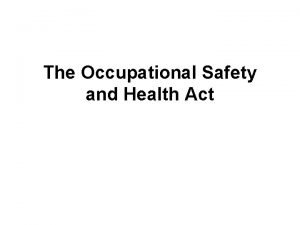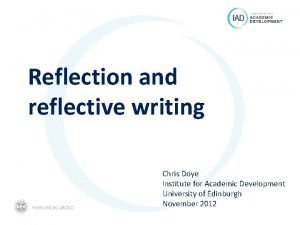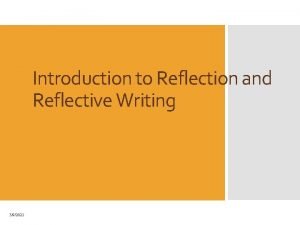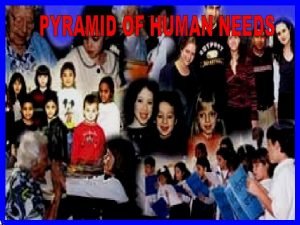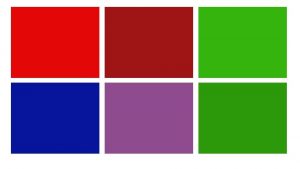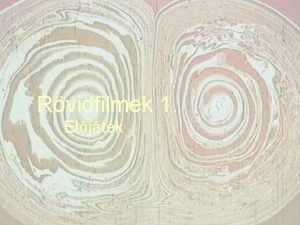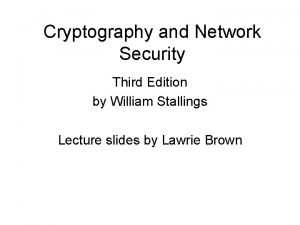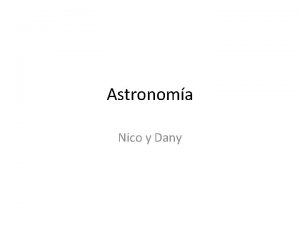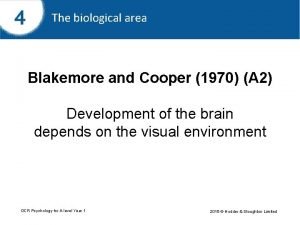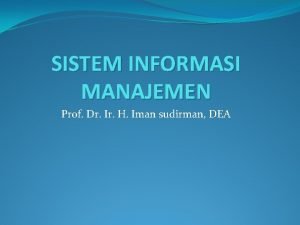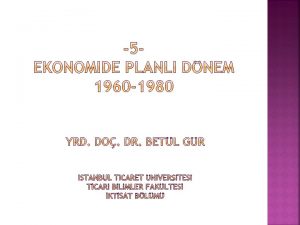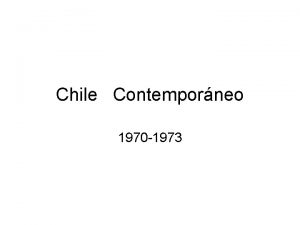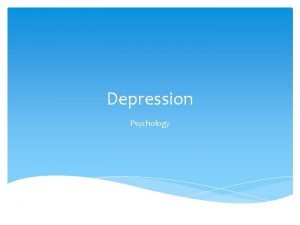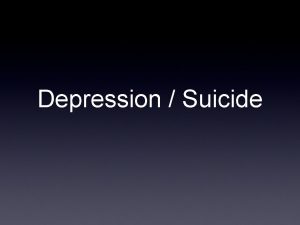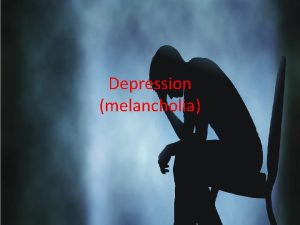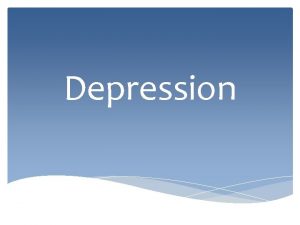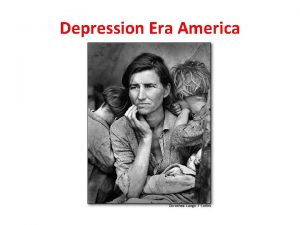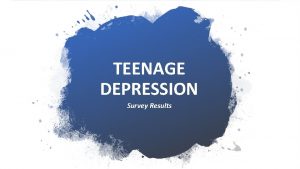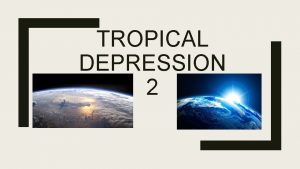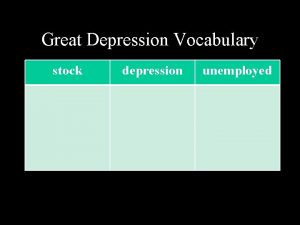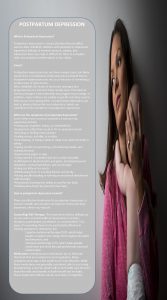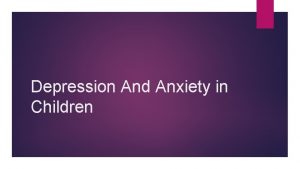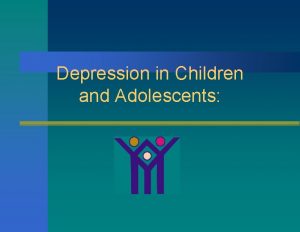Depression in Children Introduction 1970 Depression in children



























- Slides: 27





Depression in Children- Introduction 1970: Depression in children as entity • Shpitz, Bolby: anaclytic depression • Difficult to diagnose before 7 y • body language, posture, face • Age and developmental stage =>clinical picture

Depression in Children –Clinical Picture Early Childhood < 10 y: Late childhood: • • • • looks sad tearful slow movements monotone voice Irritability hopeless self in negative terms school problems somatization!! low self esteem apathy irritability anxiety Poor concentration suicide attempts

Mood Disorders are Genetic Higher concordance for depression among MONOZYGOTIC twins compared with DIZYGOTIC


Amygdala in Child Behavior • The gate for the assignment of emotional significance to memories. • Fear • Anxiety • Depression (Hariri A. et al, AGP 2004 -5; Charney DS, BP 2004)

Neuroendocrine Disregulation of Serotonin and not Epinenephrineprimary event. Other indolamine disregulations later in life are secondary to the damage in adolescence (Sokolov & Kutcher 2001; Cambridge Child Depression Studies (19881997)

2 Learning Disorders (Academic Skills Disorders)






Learning Disorders (Academic Skills Disorders) DSM IV (1994): • Reading disorder • Disorders of written expression • Mathematics disorder (“dyscalculia”) • Learning disorders NOS

: לקות למידה ספציפית ( קריאה )דיסלקציה Reading Disorder (=Dyslexia) • Visual-spatial type verbal association to visual stimuli (dog=god; p=q) R/L confusion, mixed laterality. May have good visual skills for holistic perceptions • Audio-phonological type Phonemic substitutions (evaporate=evacuate) • Language disorder Dysnomia, low comprehension, poor sound discrimination Mattis 1978, King & Noshpitz , 1991

: לקות למידה ספציפית ( כתיבה )דיסגרפיה Writing Disorder (=Dysgraphia) • Specific reading disability is rare • Usually with dyslexia • Poor spelling Mattis 1978, King & Noshpitz , 1991

: לקות למידה ספציפית ( כתיבה )דיסקלקוליה Arithmetic Disorder (=Dyscalculia) • Chain of processes • Problem in each part of the chain • Organization skills • With dyslexia Mattis 1978, King & Noshpitz , 1991


: לקות למידה ספציפית. 3 =comorbidity תחלואה נלוות • • NVLD MR ADHD ADD ODD CD Depression (Erikson 1950, Gallicio, 1987, Simpson 1997) Erikson: • School as crucial for identity and industry. • Personal inferiority

: לקות למידה ספציפית =תחלואה נלוות comorbidity The literature supports considerable comorbidity of attention deficit hyperactivity disorder with conduct disorder, oppositional defiant disorder, mood disorders, anxiety disorders, learning disabilities, and other disorders, such as mental retardation, Tourette's syndrome, and borderline personality disorder. Biederman J et al Am J Psychiatry. 1991

: לקות למידה ספציפית תסמיני דיכאון כחלק מלקות למידה The researchers have found that students with learning disabilities (LD) obtain statistically higher scores on measures of depression than their peers without LD. However, what is not known is whether students with LD display greater levels of clinical depression than their peers without LD. (Maag JW, Reid R. (meta-anlysis)J Learn Disabil. 2006)



 Occupational safety and health act
Occupational safety and health act Lambang perpaduan kaum 31 ogos 1970
Lambang perpaduan kaum 31 ogos 1970 Chris doye
Chris doye Why is it called the period of activism?
Why is it called the period of activism? Ainsworth and bell
Ainsworth and bell Jacob kounin withitness
Jacob kounin withitness Bortons model of reflection 1970
Bortons model of reflection 1970 Clasificacion de las computadoras
Clasificacion de las computadoras Usda food pyramid 1970
Usda food pyramid 1970 Potter 1970
Potter 1970 Abraham maslow (1908-1970)
Abraham maslow (1908-1970) Color 15111999
Color 15111999 1970 1980 1990
1970 1980 1990 álmok szárnyán 1968
álmok szárnyán 1968 Norka peralta biografia
Norka peralta biografia 1970 mod 1066
1970 mod 1066 Gcd of 1970 and 1066
Gcd of 1970 and 1066 Cometa 1970
Cometa 1970 1960-1970 arası türk hikayesi
1960-1970 arası türk hikayesi Blakemore and cooper
Blakemore and cooper Software 1970
Software 1970 Sistem informasi manajemen 1970
Sistem informasi manajemen 1970 Inverse of 550 in gf(1759)
Inverse of 550 in gf(1759) Kirmus
Kirmus Euler's theorem
Euler's theorem 1970 dçm
1970 dçm 1967 1968 1969 1970 1971 1972 1973 1974 1975 1976
1967 1968 1969 1970 1971 1972 1973 1974 1975 1976 Bortons 1970 model of reflection
Bortons 1970 model of reflection
